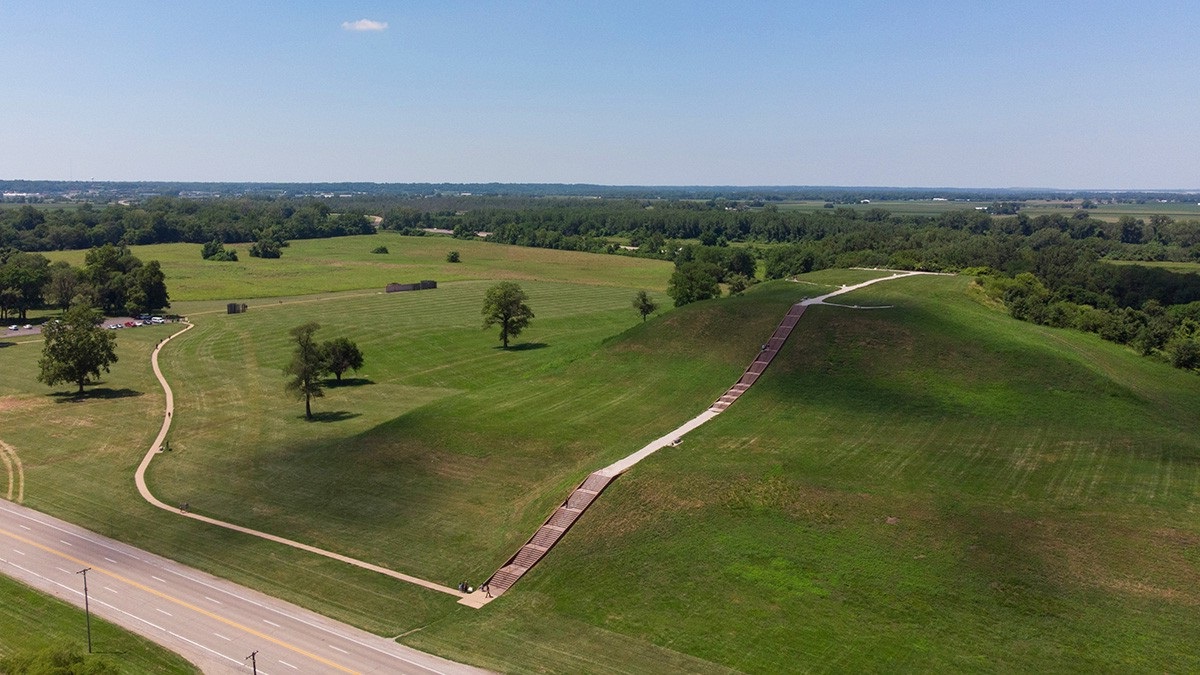Secrets Of Cahokia Mounds In Illinois

Have you ever wondered about the ancient wonders hidden in the heart of America? Cahokia Mounds in Illinois offers a glimpse into a mysterious civilization that thrived long before European settlers arrived. This UNESCO World Heritage site spans over 2,200 acres and features more than 70 mounds, each with its own story. Imagine walking through a place where thousands once lived, worked, and worshipped. The largest mound, Monks Mound, stands as a testament to the ingenuity and effort of the Mississippian people. Whether you're a history buff or just curious about ancient cultures, Cahokia Mounds promises a fascinating journey into America's past.
Secrets of Cahokia Mounds in Illinois
Cahokia Mounds, located in Illinois, is a site filled with mystery and history. This ancient city, once home to a thriving Native American culture, offers a glimpse into a world long past. Let's uncover some of the secrets hidden within this fascinating place.
The Grand Plaza
The Grand Plaza is the heart of Cahokia Mounds. This massive open space served as a central gathering area for ceremonies, markets, and games. Imagine the bustling activity that once filled this area.
- Monks Mound: The largest prehistoric earthwork in the Americas, Monks Mound stands at 100 feet tall. It served as the political and religious center of Cahokia.
- Woodhenge: A circle of large wooden posts that functioned as a solar calendar. It helped the Cahokians track the seasons and plan agricultural activities.
- Mound 72: This burial mound revealed the remains of a high-status individual, along with numerous grave goods and sacrificial victims, indicating complex social and religious practices.
The Residential Areas
Beyond the Grand Plaza, Cahokia was home to thousands of people. The residential areas provide insights into the daily lives of its inhabitants.
- Ramey Field: An area believed to be used for farming and possibly housing. Archaeologists found evidence of maize cultivation, a staple crop for the Cahokians.
- Copper Workshop: Excavations uncovered tools and raw materials used for crafting copper items. This workshop highlights the advanced metallurgical skills of the Cahokians.
- Neighborhoods: Various residential neighborhoods have been identified, showing different housing styles and community layouts. These areas reveal the social structure and living conditions of the people.
The Defensive Structures
Cahokia was not just a peaceful city; it had defensive structures to protect its inhabitants from potential threats.
- Stockade Wall: A massive wooden wall surrounded the central part of the city. It was rebuilt several times, indicating ongoing concerns about security.
- Watchtowers: Positioned along the stockade wall, these towers allowed guards to keep an eye on the surrounding area. They provided an early warning system against invaders.
- Moats: Some areas had moats or ditches, adding an extra layer of defense. These features show the strategic planning involved in protecting the city.
The Religious and Ceremonial Sites
Religion played a significant role in Cahokian society. Several mounds and structures were dedicated to religious and ceremonial purposes.
- Mound 34: Known for its intricate copper workshop, this mound also had ceremonial significance. It highlights the connection between craftsmanship and religious practices.
- Mound 38: This mound contained a large number of burials, suggesting it was a significant site for funerary rituals.
- The Great Rattlesnake Mound: Shaped like a serpent, this mound is believed to have had religious importance. Its unique design sets it apart from other mounds in Cahokia.
The Mysteries of Cahokia
Despite extensive research, many aspects of Cahokia remain shrouded in mystery. These unanswered questions continue to intrigue archaeologists and historians.
- The Decline: The reasons behind Cahokia's decline around 1350 AD are still debated. Possible factors include environmental changes, resource depletion, and social upheaval.
- The Builders: The identity of the people who built Cahokia is still uncertain. While they are often referred to as the Mississippians, their exact origins and connections to other cultures remain unclear.
- The Purpose of the Mounds: While some mounds' purposes are known, others remain a mystery. Their exact functions and the rituals performed on them continue to be subjects of research.
Why Cahokia Mounds Should Be on Your Bucket List
Cahokia Mounds offers a unique glimpse into ancient Native American culture. This historic site, located in Illinois, features impressive earthworks and artifacts that tell the story of a once-thriving civilization. Walking through the mounds, you can almost feel the presence of the people who built them. The site's museum provides detailed exhibits that enhance your understanding of this fascinating period.
Visiting Cahokia Mounds is not just an educational experience; it's also a chance to connect with history on a personal level. The serene landscape and well-preserved structures make it a perfect destination for history buffs and casual visitors alike. Whether you're exploring the mounds or learning in the museum, you'll leave with a deeper appreciation for the ingenuity and culture of the ancient inhabitants. Add Cahokia Mounds to your travel plans for an unforgettable journey through time.

